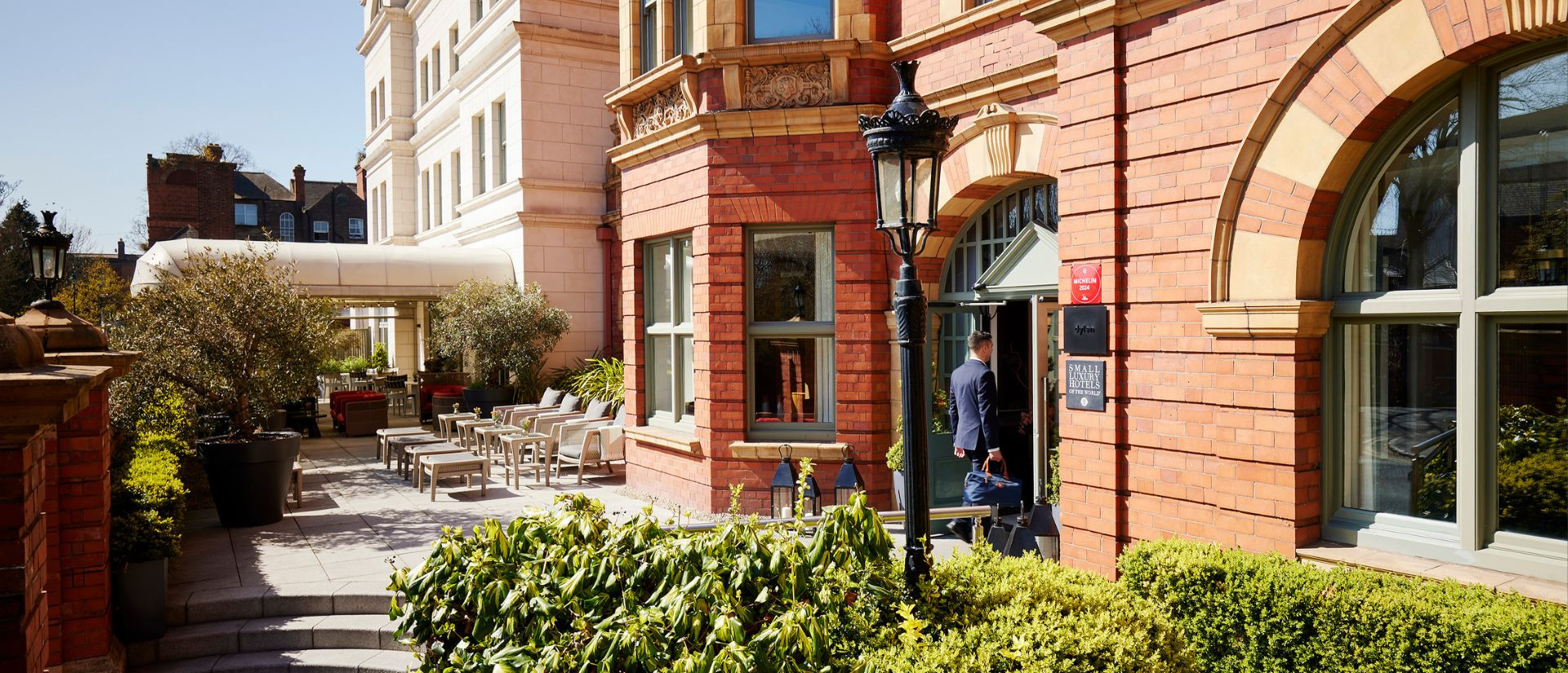Baggot Street, A Poetic Neighbourhood
Baggot Street is rich in architectural and literary history. Stretching from the elegance of Merrion Row to the leafy calm of Pembroke Road, it crosses the Grand Canal near Haddington Road, connecting centuries of stories along its path.
Divided into Lower and Upper Baggot Street, the area reflects Dublin’s layered past. Lower Baggot Street, once known as Gallows Road, is lined with Georgian inspired architecture, while Upper Baggot Street, home to Dylan Hotel, exudes Victorian charm and 20th-century character. Just steps away from our doorstep stands the Royal City of Dublin Hospital, which opened its doors in 1834 and was designed by Sir Albert Edward Murray, the same architect behind Dylan’s own red-brick exterior known as Murray’s Mellow Mixture.
This neighbourhood has long inspired poets with Oscar Wilde himself once calling it home.
Oscar Wildes Home, A Literary Legacy Near Dylan
Just a short stroll from Dylan Hotel lies Number One Merrion Square, an elegant Georgian townhouse that once bellowed with the wit and brilliance of Oscar Wilde. Only six minutes from Merrion Row and a 20 minute walk from Dylan, this address remains one of Dublin’s most treasured literary landmarks.
From 1855, the Wilde family called this house home. Oscar’s mother, Lady Jane Wilde, was a celebrated poet, writer, and translator. His father, Sir William Wilde, was a renowned eye and ear surgeon whose reputation extended across Europe. The Wilde household was one of intellect and artistry, his elder brother Willie became a journalist, while his younger sister Isola, whose life was tragically brief, inspired some of Oscar’s most poignant reflections.
This home became a gathering place for Dublin’s literary elite, where conversations flowed between minds like Bram Stoker, John B. Yeats, and Joseph Sheridan Le Fanu. It was here that Oscar Wilde’s early world was shaped by poetry, politics, and the power of storytelling.
An Educated Individual, The Early Life of Oscar Wilde
Oscar Wilde’s literary journey began with a background as elegant and refined as the style of his writing.
Born at 21 Westland Row, now part of Trinity College Dublin, his birthplace has since become the Oscar Wilde Centre, home to the university’s Irish writing and creative writing programmes.
Wilde’s early education took him to Enniskillen, where he attended Portora Royal School. His academic brilliance earned him a scholarship to Trinity College, where he studied classics and honed the wit and intellect that would later define his literary legacy.
His pursuit of knowledge and culture eventually led him to France, where he spent his final years. Today, Wilde rests in Père Lachaise Cemetery in Paris, his tomb marked by a striking monument and a reflective epitaph from The Ballad of Reading Gaol, a lasting tribute to a life lived with passion, intellect, and poetic defiance.
And alien tears will fill for him
Pity’s long-broken urn,
For his mourners will be outcast men,
And outcasts always mourn.
Oscar Wilde in Merrion Square
Nestled in the heart of Dublin’s Merrion Square Park, the Oscar Wilde Monument offers a vibrant and thought-provoking tribute to one of Ireland’s most celebrated literary figures. Known for his wit, charm, and provocative works, Wilde’s legacy is immortalised in this striking monument, which captures the essence of his individualistic personality.
While you are immersing yourself in our bespoke self-guided walking tour, why not take a detour off Merrion Row to Merrion Square and pause by Wilde’s statue, or explore the historic townhouse where he once lived before making your return to Dylan for a moment of serene luxury and relaxation.
The Dylan Hotel Team

